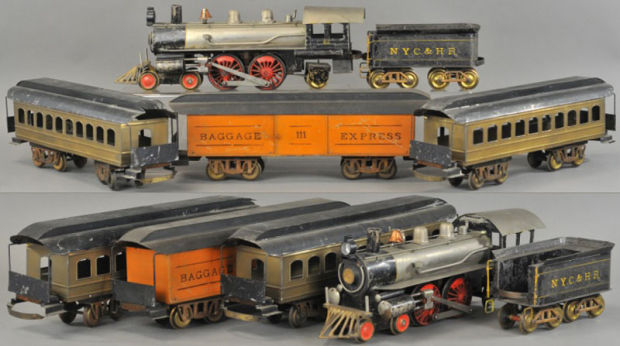Q: This cast iron pot has been passed down in my family for several generations. Oral family history says it was left on a family farm near Stonewall, Georgia, during the Civil War by Union troops who camped there and departed hastily. I’ve seen similar pots but nothing this large. Any info?
A: First, a sincere thanks to this reader for highlighting raised letters on the large cast iron pot.
They read “No. 15, 32 gal., North Chase (and) North, Philadelphia.” As you can imagine, this is one huge kettle, with handles on both sides and small peg feet. We cannot make out if there are three or four feet.
The outside surface indicates that it has been used in open fires.
We’ve all seen many cast iron kettles, if not in person then in films and TV oaters, maybe “Gunsmoke” or the like.
During the 19th century, cast iron was the only way to cook, and kettles were made in a variety of sizes and shapes. There were kettles with covers and without, kettles with spiral or solid handles, and also specialized kettles for candy making, soup, etc. Large utility kettles served for laundry and for industrial uses.
As with china-ware manufacturers, some cast iron foundries specialized in utility wares. The maker of this kettle also made cast iron coal or wood burning cook stoves during the 1850s and 1860s. North Chase (and) North also made parlor stoves.
The family lore on this large kettle is a nice story — funny how it always is; we have yet to hear any negative lore. But unless you can support it, that’s what it is; just lore. On the upside, the dates fit.
I propose a different scenario. Oversize kettles such as this are often called hog pots.
Imagine a water-filled version heating over an open fire. Sometimes the kettles were fitted onto a circular cast iron collar ring laid over the fuel to raise it and help with air circulation.
Add a freshly killed hog and then boil it to soften and remove the bristles. Ergo — a hog kettle. Granted, the image lacks the romance of Union soldiers abandoning a bivouac, but there it is. How the pot got to Georgia is another story. Perhaps it was originally shipped there for Civil War troops. Or not.
On www.worthpoint.com, we found similar-sized kettles that sold on eBay for $250 to $300. Painted and filled with dirt, they make handsome flower planters.
Q: Help! I’m trying to contact a vintage postcard dealer who’s apparently gone out of business. Can you help?
A: Who can resist an opening like that? I suspect that this international buyer found us on the Net and is broadcasting his plea to all in the collecting realm. Call this an all-call.
My suggestion is to use the medium the same way he found me. Unless he’s absolutely stuck on this seller and this seller only, there are hundreds of other reliable vintage and antique postcard sellers. And they are on the Net.
I’m giving him the same advice I give any reader looking for a specific thing: Google the item and follow the leads.
Of course, due diligence is vital. Don’t buy until you check out the vendor.
Sellers go into and out of business. Who knows — someone new may have just what the buyer seeks!





